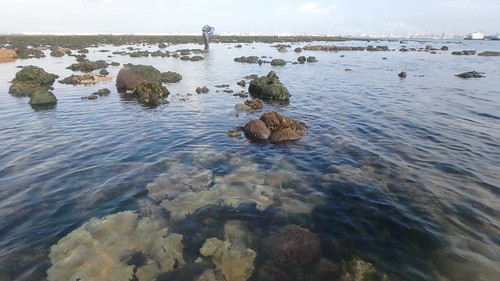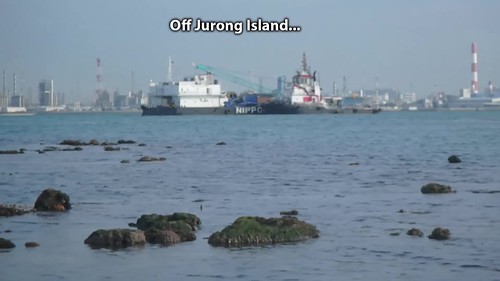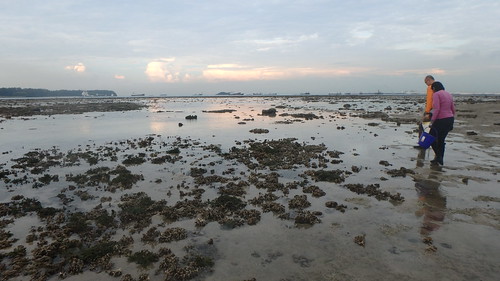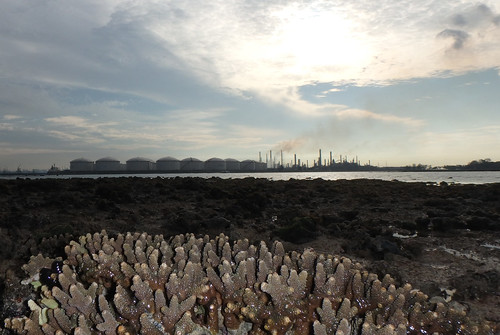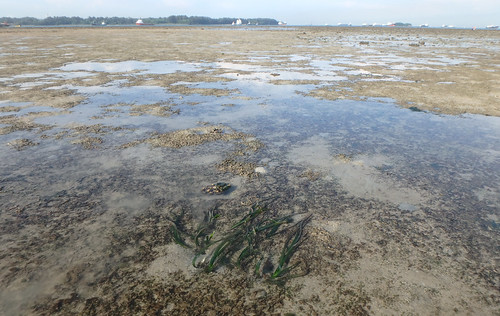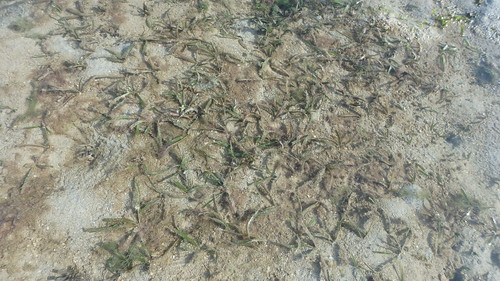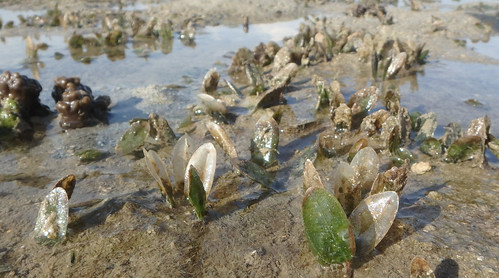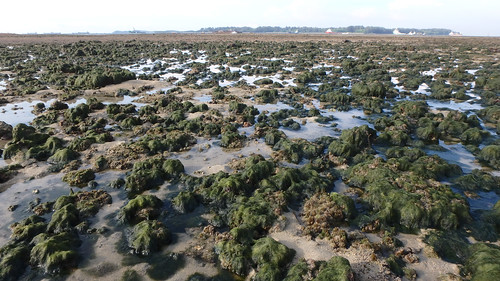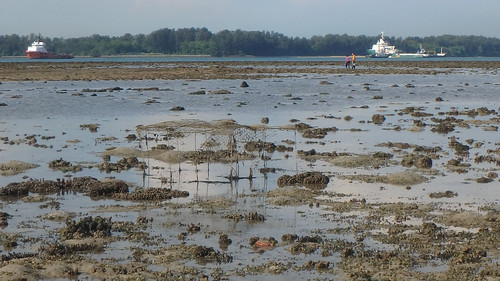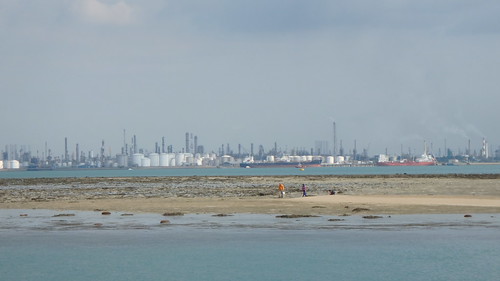 |
| Mass coral bleaching in July 2016. |
We saw cushion stars and sea turtles too!
Here's a video clip of some of the corals. This submerged reef lies close to industries on Jurong Island and Pulau Bukom. The leathery soft corals were not bleaching, and some were still very large.
The patch of branching Montipora corals near the landing point seems alright. On our last trip in July 2016, they were also not bleaching.
There was also a patch of Acropora coral that seemed mostly alright.
Most of the Merulinid corals (previously Family Faviidae) were alright, although some had pale patches.
But some of the Pore corals large and small were rather pale.
I saw many Flowery disk corals, about half were alright, the other half were pale. Also a few Thin disk corals which were not bleaching.
I saw several Anemone corals and they were not bleaching, although one small Goniopora coral was rather pale.
Some special corals seen include Castle coral, boulder Sandpaper coral, Pebble coral, Trumpet coral. Also one Circular mushroom coral and Tongue mushroom coral, both rather pale.
There were many Haddon's carpet anemones among the seagrass patches, some Frilly sea anemones, a few Giant carpet anemones and Magnificent anemones. There was also a field of Banded bead anemones. None of them were bleaching.
Russel showed us an area with three Cushion stars! These sea stars have very short arms so they just look like lumps. It is only on their underside that you can see the five part symmetry of all sea stars. After gently having a look, we should gently turn it back again.
Among the interesting animals I saw was this colourful fish. Probably some kind of wrasse?
I also came across the empty shell of a recently dead Partridge sundial snail shell, which Chay Hoon also found here some time ago.
The situation in the seagrass meadows seemed similar to our last survey here in July 2016. There were patches of Spoon seagrasses in the middle of the reef, heavily covered with epiphytes. There were also small clumps of Tape seagrasses with nice and long leaf blades (about 30cm).
There were patches of Sickle seagrass.
There were patches of Spoon seagrass with large leaf blades, some were bleaching.
The Sargassum bloom is over. But now, large parts of the rocky shore were covered in a bloom of Hairy green seaweed.
Fortunately, we didn't come across any fish nets or fish traps. This fish trap is no longer functioning.
Nick and Shabdita are looking for Fire anemones. We didn't find any at Terumbu Pempang Tengah and decided to stop for a while at nearby Terumbu Pempang Laut. Alas, no luck either. But while we waited for them on the boat, Russel and I saw sea turtles take a breath nearby! No photos as this happens too fast.
Thanks to Fong Chee Wai, President of the Nature Photographic Society of Singapore for joining us on our early morning trip today!
On the way home, we saw a boat parked very close to the reefs at Pulau Hantu. It looked like there were divers in the water nearby. I hope they are careful not to damage the reefs there.
Here's the location of the submerged reefs we visited today. 'Tengah' means 'middle' in Malay, while 'Laut' means 'seaward' and 'Darat' means 'landward'. These beautiful submerged reefs may be affected by reclamation in the future.
The 2030 Landuse Plan by the Ministry of National Development released in Jan 2013 shows plans for 'possible future reclamation' (in light blue surrounded by dotted lines) that may impact Terumbu Pempang Darat and Terumbu Pempang Tengah. More about thepossible impact of the 2030 Landuse Plan on our shores.
 |
| Click on image for larger view. |
 |
| Click on image for larger view. |
Posts by others on this trip
- Russel Low on facebook.

